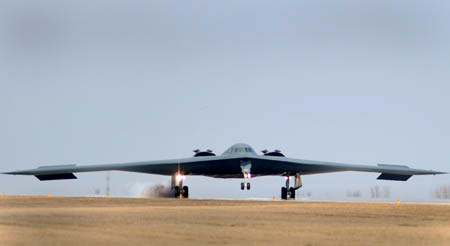 Congress must “clearly articulate” its support for the Air Force’s long-range strike bomber program if the United States is to preserve its long-range strike advantage, wrote Rep. Randy Forbes (R-Va.)—chairman of the House Armed Services Committee’s seapower and projection forces panel—and Rep. Chris Stewart (R-Utah)—a former B-1 bomber pilot. According to the opinion piece posted in The National Interest on Nov. 20, “Successfully integrating LRS-B into the Air Force inventory will be critical for deterring aggression and supporting allies in places like the Western Pacific and Middle East.” However, the article noted the Air Force doesn’t expect to begin flight testing its new long-range strike bomber until the mid-2020s and the projected total buy of 80-to-100 LRS-Bs, “is considerably less” than the some 160 bombers in service today. Meanwhile, the average age of the B-52 is 52; the average age of the B-1 is 28; and the average age for the B-2 is 20 years. Modernization packages for the B-52 are expected to extend the aircraft’s service life past 2040 and modernized B-2s are expected to remain in service until 2058. While this may somewhat bridge the capability gap, “the United States is poised to face a significant shortfall in long-range strike capabilities for the next two decades, making it all the more critical to keep this program on track,” wrote the congressmen. (See also Time to Get Started from the February 2012 edition of Air Force Magazine)
Congress must “clearly articulate” its support for the Air Force’s long-range strike bomber program if the United States is to preserve its long-range strike advantage, wrote Rep. Randy Forbes (R-Va.)—chairman of the House Armed Services Committee’s seapower and projection forces panel—and Rep. Chris Stewart (R-Utah)—a former B-1 bomber pilot. According to the opinion piece posted in The National Interest on Nov. 20, “Successfully integrating LRS-B into the Air Force inventory will be critical for deterring aggression and supporting allies in places like the Western Pacific and Middle East.” However, the article noted the Air Force doesn’t expect to begin flight testing its new long-range strike bomber until the mid-2020s and the projected total buy of 80-to-100 LRS-Bs, “is considerably less” than the some 160 bombers in service today. Meanwhile, the average age of the B-52 is 52; the average age of the B-1 is 28; and the average age for the B-2 is 20 years. Modernization packages for the B-52 are expected to extend the aircraft’s service life past 2040 and modernized B-2s are expected to remain in service until 2058. While this may somewhat bridge the capability gap, “the United States is poised to face a significant shortfall in long-range strike capabilities for the next two decades, making it all the more critical to keep this program on track,” wrote the congressmen. (See also Time to Get Started from the February 2012 edition of Air Force Magazine)
Air Force Gen. Alexus G. Grynkewich assumed command of U.S. European Command on July 1, taking over the key assignment as the U.S. and its allies contend with a resurgent Russia and a grinding war in Ukraine.
